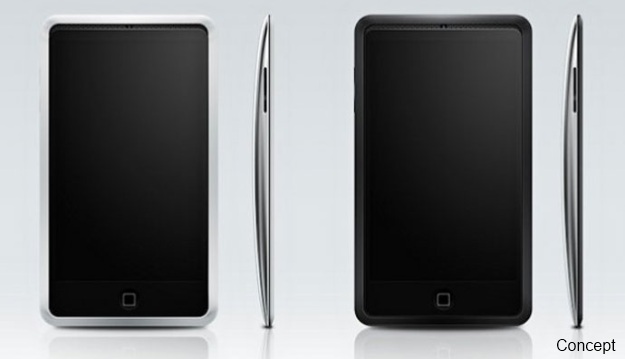
Apple has a “major iPhone revamp” in the works, reports the Wall Street Journal. The redesigned device — let’s call it iPhone 6 — is slated for a 2012 release, according to “people briefed on Apple’s plans.”
The sources say that Apple “has been experimenting with features such as a new way of charging the phone.” This new charging system was first reported by former Engadget editor-in-chief Joshua Topolsky at This Is My Next back in April. According to his information, mock-ups of the rumored device showed “some form of inductive or touch charging.” Topolsky’s sources weren’t able to confirm whether “Apple’s working on its own version of cable-free juicing.” The This Is My Next report indicated that it would be the “iPhone 5” to receive the charging update.
As Mark Gurman at 9to5Mac points out, the “cable-free juicing” could be similar to HP’s Touchstone cable-free charging system for Palm devices
The Wall Street Journal article further confirms rumors that we’ve been hearing for months. Namely, that the next iPhone will launch by the “end of September.” That device is said to have a “similar” design to the iPhone 4, but will be “thinner and lighter” (gasp!), with an 8 megapixel rear-facing camera. Many
In addition, sources tell WSJ reporter Lorraine Luk that “Apple has also been working on a less-expensive phone with new features such as an edge-to-edge screen,” though there is no indication in Luk’s article that this device and the iPhone set for September release are the same handset, as some have speculated.
On top of all this hardware talk, market analyst Shing Yin of Citadel Securities tells Barron’s reporter Tiernan Ray that chances are good that Apple will release an iPhone for the Sprint-Nextel network sometime this year, most likely before Christmas.
Hmmm… September is before Christmas. How about then?
Editors' Recommendations
- This is the iPhone concept of my dreams
- Best iPhone 15 deals: How to get Apple’s latest iPhone for free
- I found an amazing new way to use my iPhone 15 Pro Max
- Are you having iPhone alarm problems? A fix is coming soon
- Best iPhone 14 deals: Unlocked and refurbished


